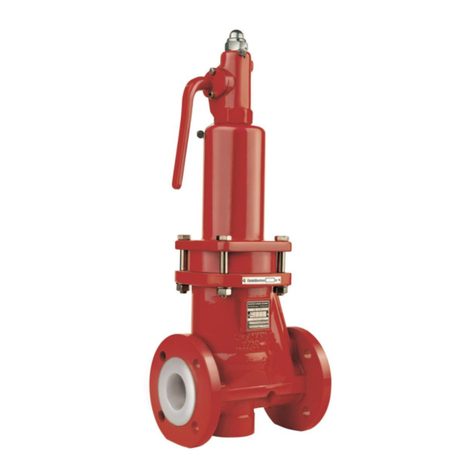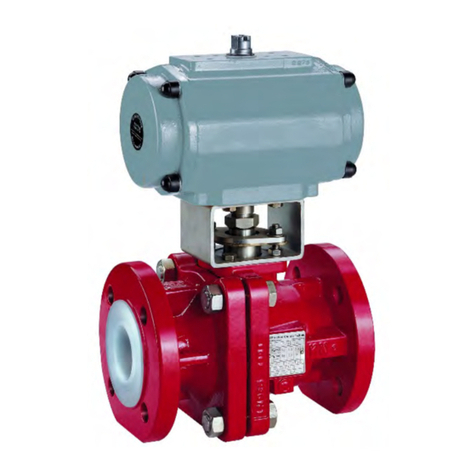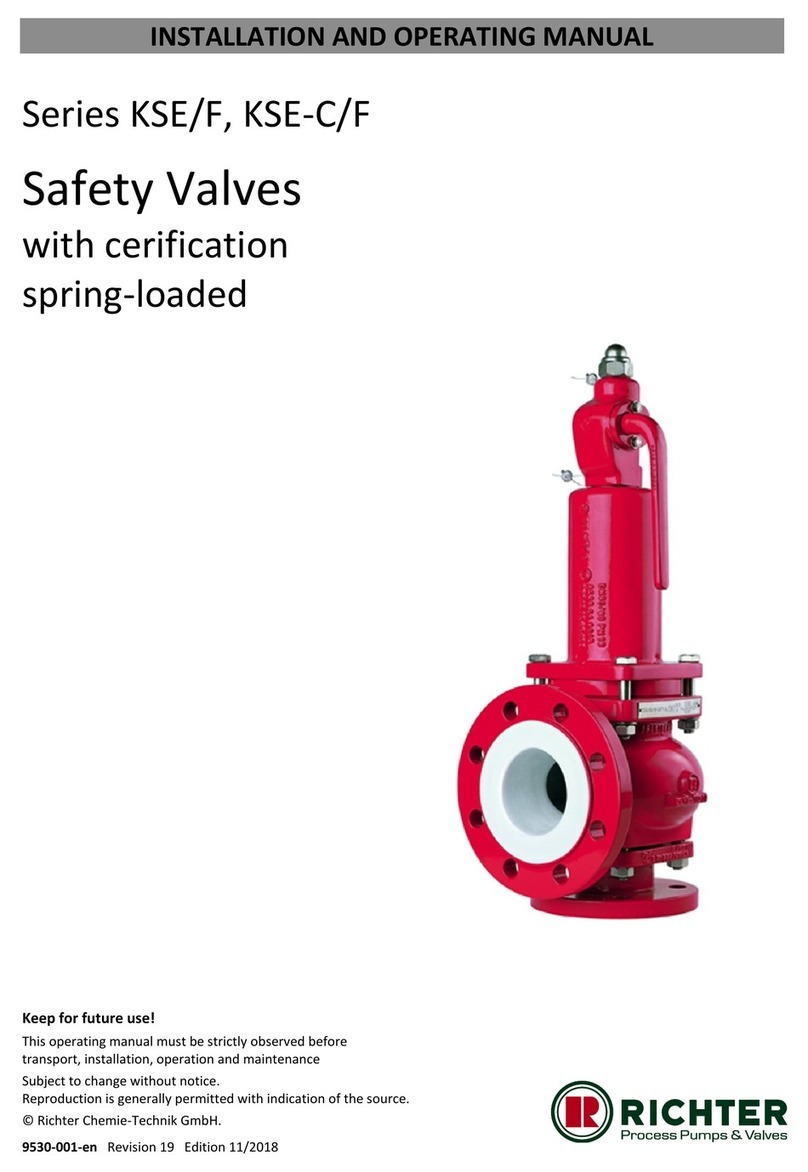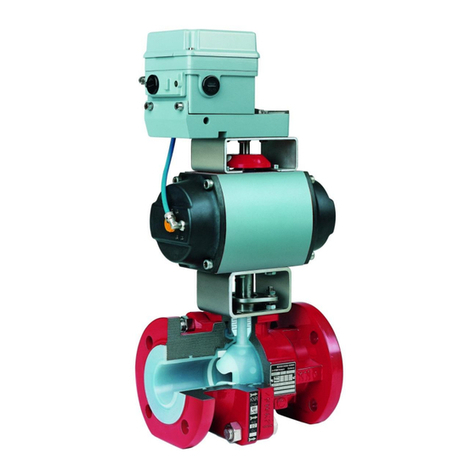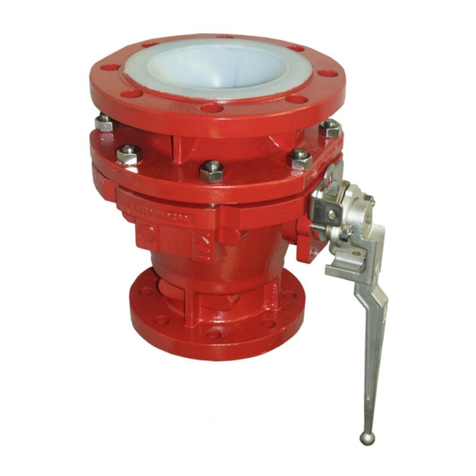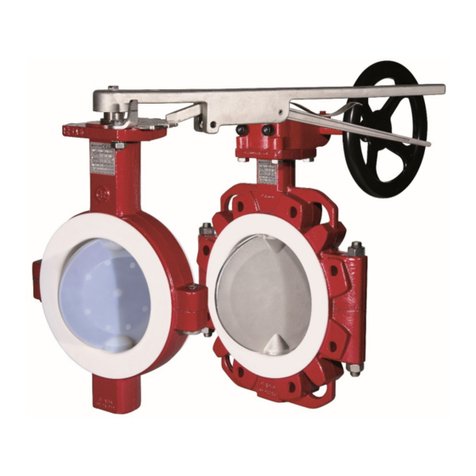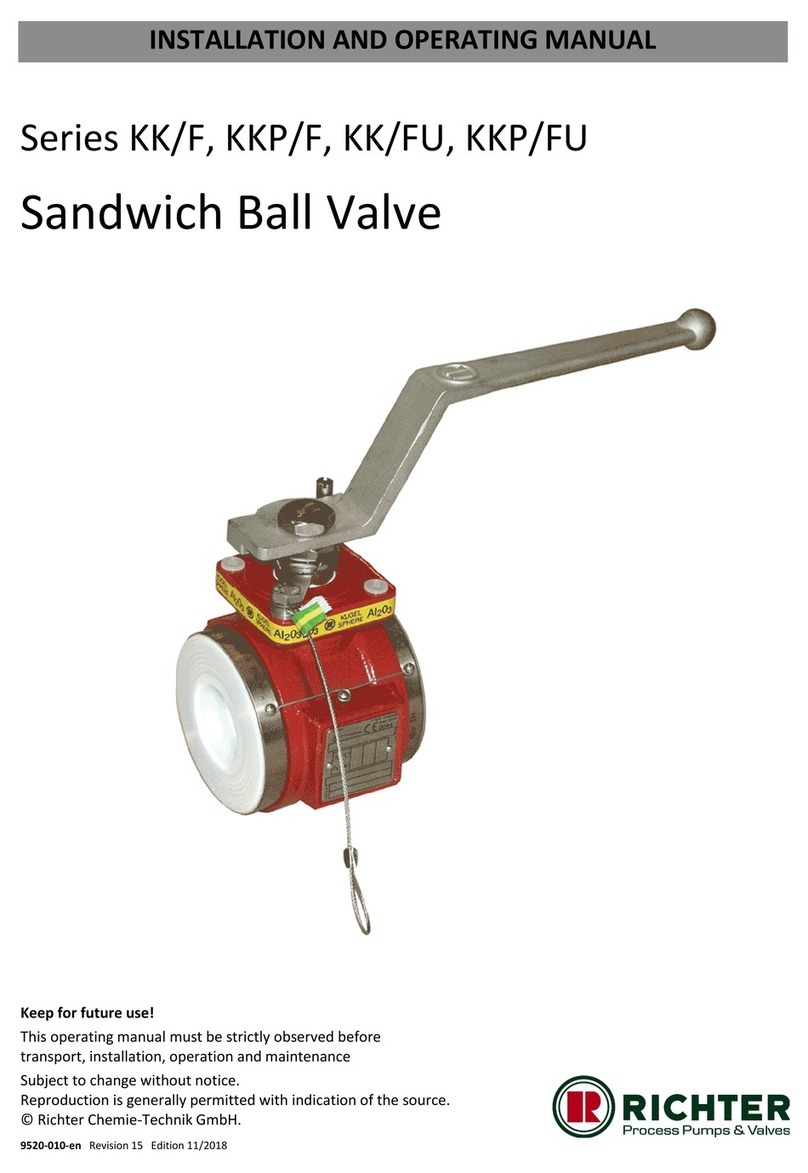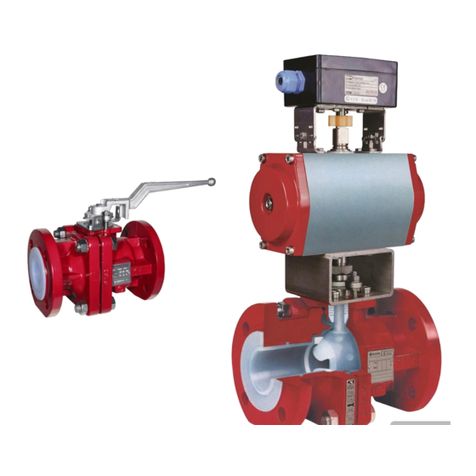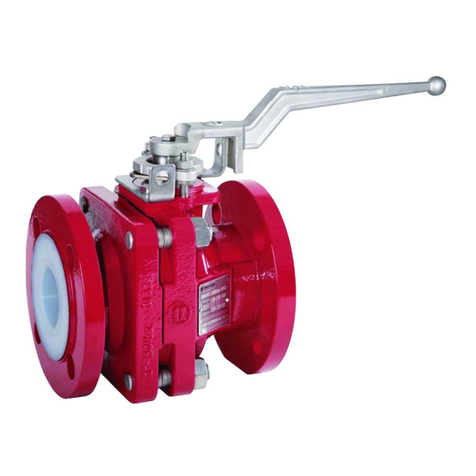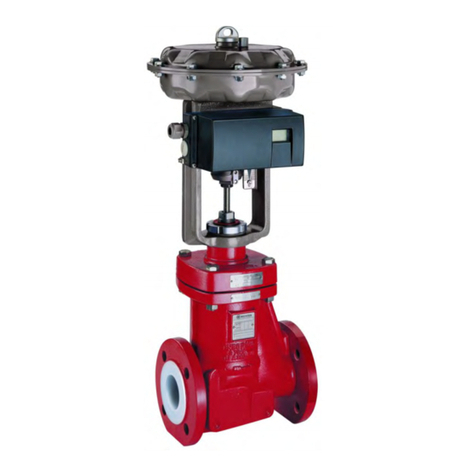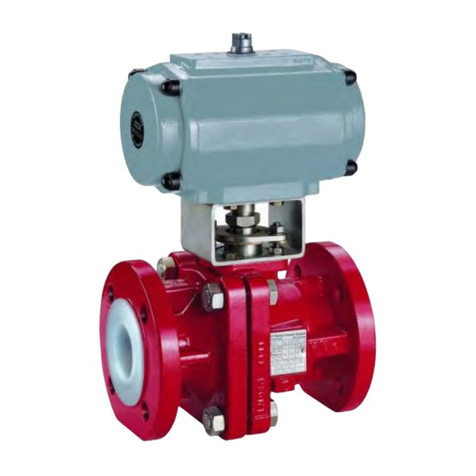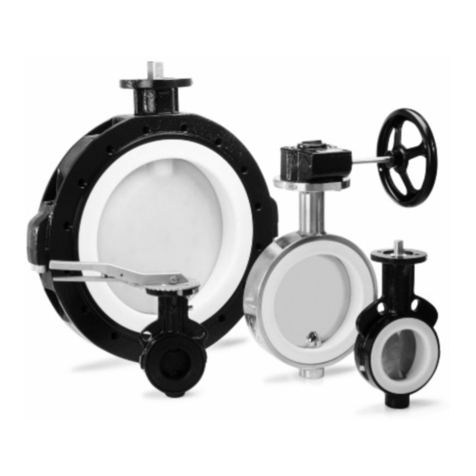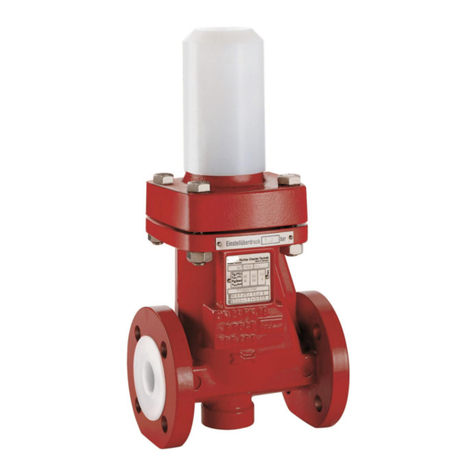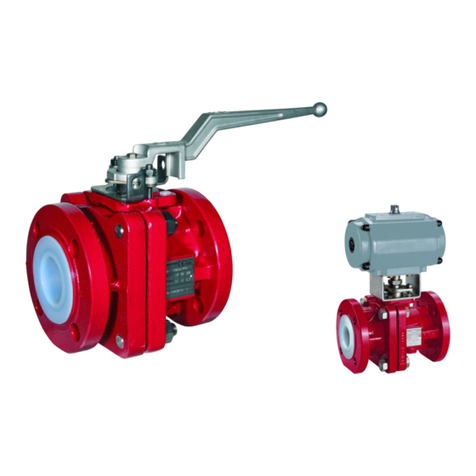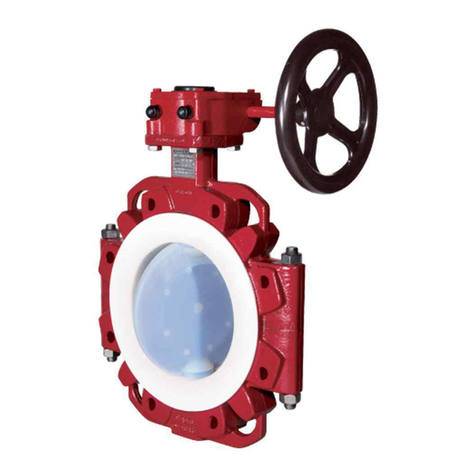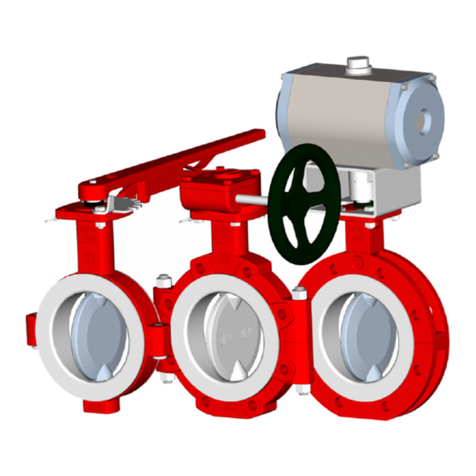
Series RSS/F Page 3
9560-060-en Revision 15
TM 9549 Edition 07/2016
1 Technical data
Manufacturer :
Richter Chemie-Technik GmbH
Otto-Schott-Str. 2
D-47906 Kempen
Telephone: +49 (0) 2152 146-0
Fax: +49 (0) 2152 146-190
Internet: http://www.richter-ct.com
Designation :
Chemical bellows-sealed globe control valve, series RSS/F,
with safety stuffing box and bellows (DN 150 only with
heavy duty-bellows) as well as interchangeable seat and
plug, actuated pneumatically or by electric motor.
Control characteristics to DIN EN 60534,
equal percentage, linear, on-off, rangeability 25:1.
V-plug, rangeability 100:1
Certified to Clean Air Act (TA-Luft)
Strength and tightness (P10, P11) of the pressure-bearing
body tested to DIN EN 12266-1.
Gas-tight (P12) in the seat to DIN EN 12266-1,
leak rate A
Face to face alternatively:
EN 558-1 basic series 1, ISO 5752 series 1
with flanges DIN EN 1092-2, type B
(ISO 7005-2 Type B) PN 16 or flanges drilled to ASME
B16.5 Class 150
ANSI/ISA-75.08.09-2004, class 150 with flanges ASME
B16.5 Class 150, raised face
ANSI/ISA-75.08.09-2004, class 300 with flanges ASME
B16.5 Class 300, raised face
Materials :
Body material: Ductile cast iron EN-JS 1049 /
ASTM A395
Lining material: PFA .../F
On request: antistatic …/F-L
highly permeation-resistant …/F-P
Bellows: PTFE, modified PTFE, Hastelloy
Seat and plug: reinforced modified PTFE,
at low Cv values also Hastelloy, tantalum
Design pressure :
PN 10 with standard PTFE bellows
with heavy-duty PTFE bellows with PTFE/carbon
support rings
PN 16 with heavy-duty PTFE bellows with stainless steel
support rings
with Hastelloy C bellows
See pressure-temperature diagram in Section 1.4.
Sizes :
DN 15, 20, 25, 40, 50, 65, 80, 100, 150 in mm
½“, ¾“, 1“, 1½“, 2“, 3“, 4“ in inches, Cl 150
1“, 1½“, 2“ in inches, Cl 300 on request
Temperature range : -60 °C to 180 °C
See pressure-temperature diagram in Section 1.4.
Installation position :
Normally in horizontal line with the actuator on top. See
Section 6.2.
The direction of flow is marked by an arrow cast into the
body.
Dimensions and individual parts :
See sectional drawings in Section 10.
Weight :
For weight of actuator, see actuator manufacturer's
manual.
Wear parts : Seat, plug, bellows
Options :
Heavy-duty-PTFE-bellows (DN 25-100, 1“- 4“)
For permeating media and elevated pres-
sures/temperatures
DN 80-150, 3“-6“ guide tube made of Hastelloy
Hastelloy C-bellows (not DN 150)
For special applications (e.g. extreme permeation)
V-control plug for small Cv values
Monitoring connection
For higher safety requirements
Actuator and actuator accessories
